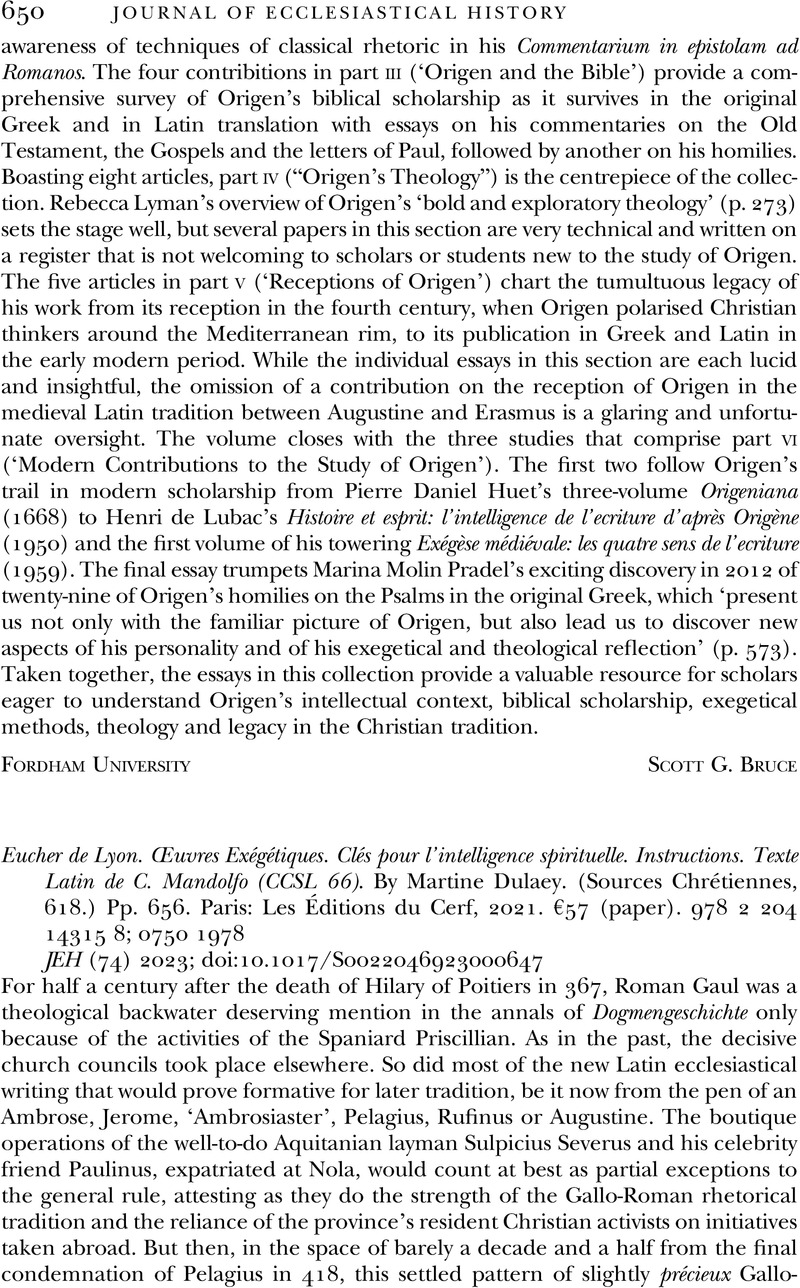No CrossRef data available.
Article contents
Eucher de Lyon. Œuvres Exégétiques. Clés pour l'intelligence spirituelle. Instructions. Texte Latin de C. Mandolfo (CCSL 66). By Martine Dulaey. (Sources Chrétiennes, 618.) Pp. 656. Paris: Les Éditions du Cerf, 2021. €57 (paper). 978 2 204 14315 8; 0750 1978
Review products
Eucher de Lyon. Œuvres Exégétiques. Clés pour l'intelligence spirituelle. Instructions. Texte Latin de C. Mandolfo (CCSL 66). By Martine Dulaey. (Sources Chrétiennes, 618.) Pp. 656. Paris: Les Éditions du Cerf, 2021. €57 (paper). 978 2 204 14315 8; 0750 1978
Published online by Cambridge University Press: 05 July 2023
Abstract
An abstract is not available for this content so a preview has been provided. Please use the Get access link above for information on how to access this content.

- Type
- Reviews
- Information
- Copyright
- Copyright © Cambridge University Press 2023



